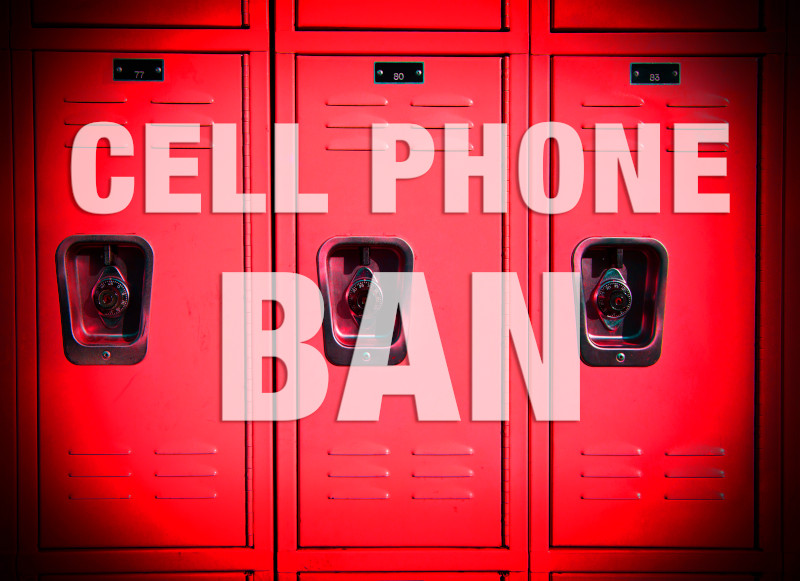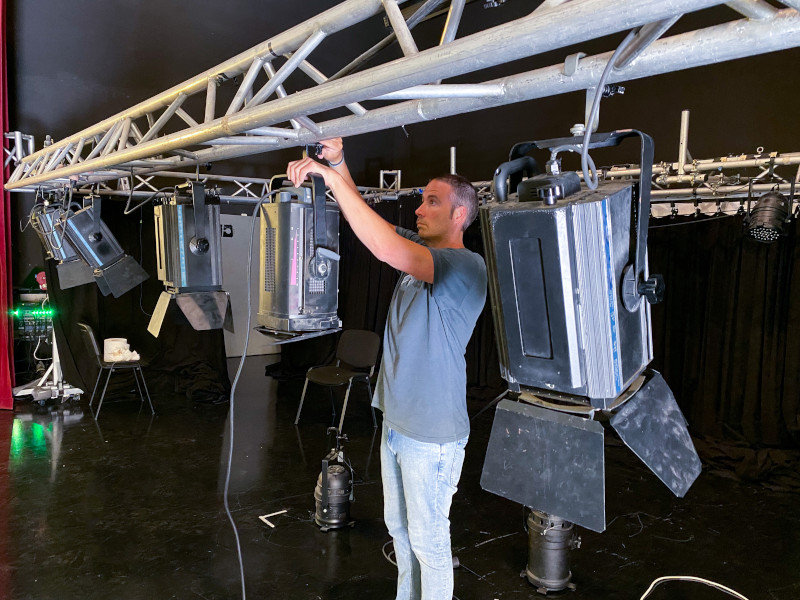Banning cell phones in the classroom

Key takeaways:
- If schools are considering banning cell phones in classrooms and other spaces, they should consider potential liability risks, such as phones becoming damaged or lost.
- The DONUT framework—Development, Opportunity, Notice, Uniformity and Timeliness—can help schools as they create a cell phone policy.
- As a school implements a cell phone policy, education is key—both for staff members and for students.
This fall, a number of schools across the country doubled down on their cell phone policies, requiring students to place their devices in a storage cabinet during class. In most cases, the students are permitted to reclaim their phone at the end of class, but these new rules beg the question: Are there inherent risks in establishing a cell phone ban?
First, let’s look at the reasons why a school might want to ban cell phones:
- They can be incredibly distracting during class.
- Students can use phones to bully others when they should be concentrating on classwork.
- Too much screen time is never a good idea—especially for teenagers, whose brains are still developing.
All the above can be used by administrators as justification for creating such a policy. But there are certainly also legal, operational and cultural implications of this decision.
Liability considerations
When a school is writing a policy for cell phones or other personal devices, it needs to consider liability risks when deciding on the exact wording.
Medical and accessibility needs: It seems like there’s an app for everything, and young people who have chronic medical conditions are especially appreciative of apps that help them track their medications, food intake and other important health data. If such a child or teen missed an alert because their phone was taken away, that could lead to a medical emergency and might expose the school to a lawsuit. Other students with hearing impairments, or who experience language barriers, need their phones to help them with communication. When an organization fails to consider these special situations, that can lead to legal challenges and reputational damage.
Phone damage and loss: If a school collects a student’s phone at the beginning of the period or the school day, it then becomes responsible for that phone while in the school’s possession. This puts the phone at risk of being scratched or otherwise damaged. Furthermore, another student could accidentally (or on purpose) take the wrong cell phone home. Any policy should specify that the school is not responsible if the phone becomes damaged or lost.
Emergency communication: Cell phone use during a school emergency—such as an active intruder incident—has always been a source for contention. On one hand, parents want their children to be able to call for help and check in. On the other, multiple phones in an emergency can jam cell signals or spread misinformation, making it difficult for first responders to do their job. Regardless, schools still need a system in place to facilitate communication in an emergency. Some solutions could include two-way radios or designated emergency phones. Having these devices available can help organizations demonstrate their commitment to safety and preparedness.
Because of the above liability concerns, schools should take special care when creating a cell phone policy.
The DONUT framework
CM Regent risk control has devised an acronym to guide schools as they prepare to implement cell phone bans or limit use during the school day.
- D – Development – It’s important to include all relevant stakeholders in policy development. In the case of schools, those stakeholders include not only administrators, but also staff members, students and parents/legal guardians. These groups are more likely to buy into the policy when they have a say.
- O – Opportunity – Pilot programs and phased rollouts give organizations the opportunity to test new policies before they become official. Such programs are a chance to identify any potential problems, allowing school leaders to refine their strategy before going all in on the new policy.
- N – Notice – The key to the success of any new school policy is to give families plenty of notice. Students are unlikely to comply with a new policy that is sprung on them, for example, as they walk into class. Instead, it’s important to communicate with both the students and their parents in several ways, including postal mail, email, social media and automated phone calls.
- U – Uniformity – Any policy limiting cell phone use should be applied uniformly. Administrators should stress to teachers and other staff members that they should restrict their own cell phone use when in the presence of students. They can use phones during scheduled break times throughout the day.
- T – Timeliness – Any penalties for not complying with policy should be timely and fair. In other words, rather than waiting a few days after the infraction, teachers and other staff members should implement consequences right away.
Implementing the new policy
As schools start applying their new cell phone policy, they should:
- Train staff members on the best ways to enforce the policy. School employees are on the front lines, so they need the right tools to answer young people’s questions. Schools should role-play scenarios and provide clear guidelines for what they should and shouldn’t do.
- Provide education for the students. If a new policy doesn’t make sense to a student, they’re less likely to follow it. A school should give youth a clear understanding of why these boundaries exist and how they can use technology responsibly.
- Enforce the policy fairly. Everyone should be subject to the same policy unless they fall under one of the exception groups noted above.
As cell phone bans become more common in schools, it’s perhaps easier to implement one now. However, it’s important that administrators talk through all the potential liabilities and consult legal counsel before moving forward. Preparation is always better than reaction!
Questions & answers
Q: Why would schools want to ban cell phones in the classroom?
A: Phones can be distracting during class, taking students’ attention away from their studies. Additionally, studies have shown that too much screen time can be detrimental to students’ health.
Q: What are some of the liability considerations when a school is considering a cell phone policy?
A: Youth who have chronic medical conditions may need their phones nearby to track health alerts, medication and foods. Additionally, schools need to minimize the risk of phones becoming damaged or stolen while in their possession.
Q: What is the DONUT framework for creating policies?
A: The DONUT framework, created by risk control at CM Regent, helps organizations consider all aspects of policy development. It stands for: D – Development; O – Opportunity; N – Notice; U – Uniformity; and T – Timeliness.
Q: How can schools best implement a cell phone policy?
A: It’s important to educate both staff members and students on the reasons for the policy and how it will work.




